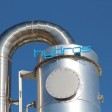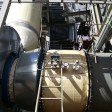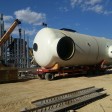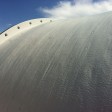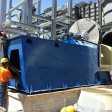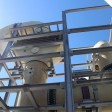Hydros designs chlorination systems in both liquid and gaseous phases. Generally for reduced flow rates, chlorine in the gas phase is used directly, while on high flow rates it is preferable to use chlorine in the liquid phase which is vaporized and injected into the system through injector device.
Hydros is able to design and build systems for small and big flowrate with particular attention to compliance with the regulations governing the use of chlorine and with particular reference to the provisions of the following institutions / laws:
Cl The Chlorine lnstitute USA
WCC World chlorine Council
IS 4263 Code of safety for chlorine
All our systems are designed with the utmost care in the choice of materials and equipment installed in them in order to ensure a long service life, easy maintenance and total safety for the operator.
What is disinfection?
Human exposure to wastewater discharged into the environment has increased in the last 15 to 20 years with the rise in population and the greater demand for water resources for recreation and other purposes. Wastewater is disinfected to prevent the transmission of infectious diseases and to ensure that water is safe for human contact and the environment. There is no perfect disinfectant. However, there are certain characteristics to look for when choosing the most suitable disinfectant:
• ability to penetrate and destroy infectious agents under normal operating conditions;
• lack of characteristics that could be harmful to people and the environment;
• safe and easy handling, shipping, and storage;
• absence of toxic residuals, such as cancer-causing compounds, after disinfection; and • affordable capital and operation and maintenance (O&M) costs.
What is chlorine disinfection?
Chlorine is the most widely used wastewater disinfectant in the U.S., and it kills most bacteria, viruses, and other microorganisms that cause disease. Chlorine is introduced to wastewater in the form of gas, hypochlorites (tablets, solutions, or powder), and other compounds. The different forms of chlorine used at wastewater treatment plants are gaseous chlorine, sodium hypochlorite solution, calcium hypochlorite, and bromium chloride. Wastewater and chlorine are first mixed completely in less than 1 second and then enter a baffled contact chamber to allow time for disinfection to occur. The effluent is then discharged to the receiving water. Chlorine residuals can persist in treated wastewater for many hours. To minimize the effect on aquatic life and the environment, most states require that chlorinated wastewater be dechlorinated. Dechlorination is the process of removing the chlorine residual prior to discharge. Some commonly used dechlorinating chemicals are sulfur dioxide, sodium bisulfite, sodium metabisulfite, and activated carbon. See below image for a flowchart of the chlorination process using liquid chlorine and dechlorination using sulfur dioxide.
What are the advantages of using chlorine disinfection?
• Chlorine is a well-established technology.
• Presently, chlorine is more cost-effective than other disinfection methods (except when dechlorination is needed and fire code requirements must be met).
• The chlorine residual that remains in the discharged wastewater can prolong disinfection even after initial treatment and also provides a measure of the effectiveness.
• Chlorine disinfection is reliable and effective against a wide spectrum of microorganisms.
• Flexible dosing enables greater control over disinfection since wastewater characteristics vary from time to time.
• Chlorine can eliminate noxious odors while disinfecting.
What determines the performance of chlorine disinfection?
The effectiveness of chlorination depends on the dose, the chlorine demand of the wastewater, the chlorine residual, the amount of time the wastewater is in contact with the chlorine, the fecal coliform count in the wastewater, and other wastewater characteristics. The required degree of disinfection can be achieved by varying the dose and the contact time for any chlorine disinfection system. The chlorine dose usually ranges from 5 to 20 milligrams per liter (mg/L).
For optimum performance, the chlorination system must be designed so that the wastewater flows turbulently in a plug flow fashion throughout the contact chamber, ensuring complete mixing. This mixing allows the chlorine to have maximum contact with the wastewater and ensures that there are no dead areas (unused portions) of the tank.
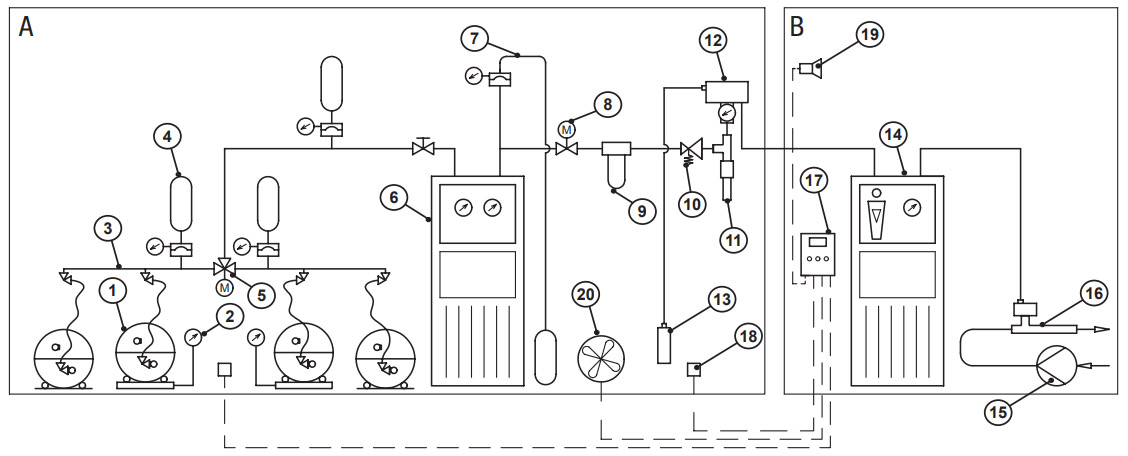
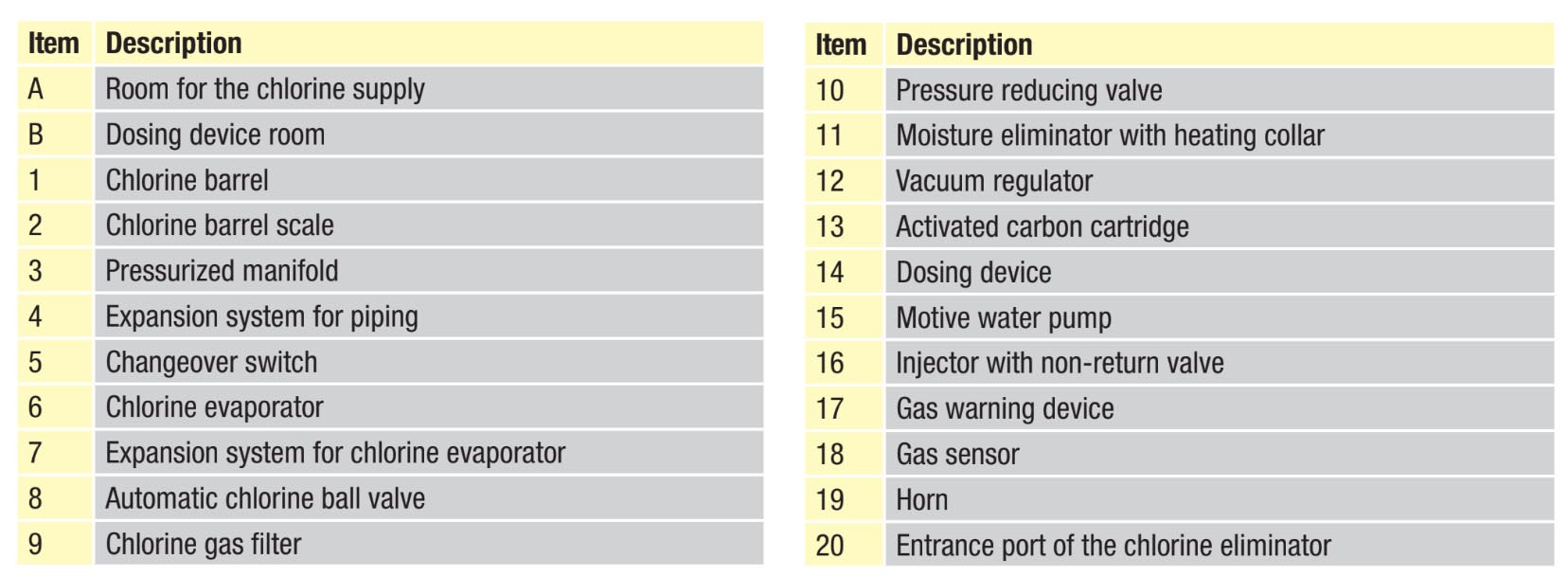
Generiche scheme for chlorination system


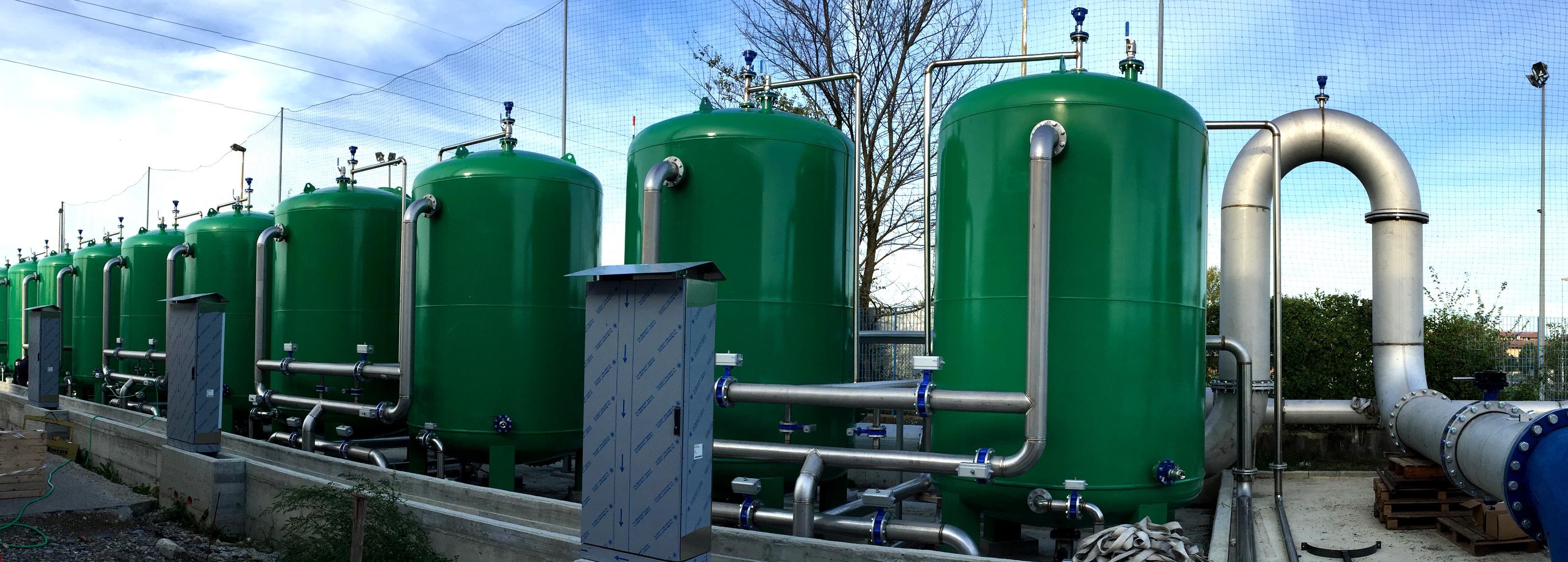











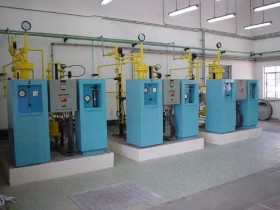
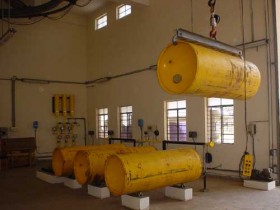
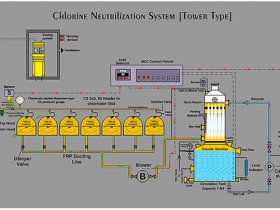
 CERTIFICAZIONI | Scarica in formato .pdf
CERTIFICAZIONI | Scarica in formato .pdf 